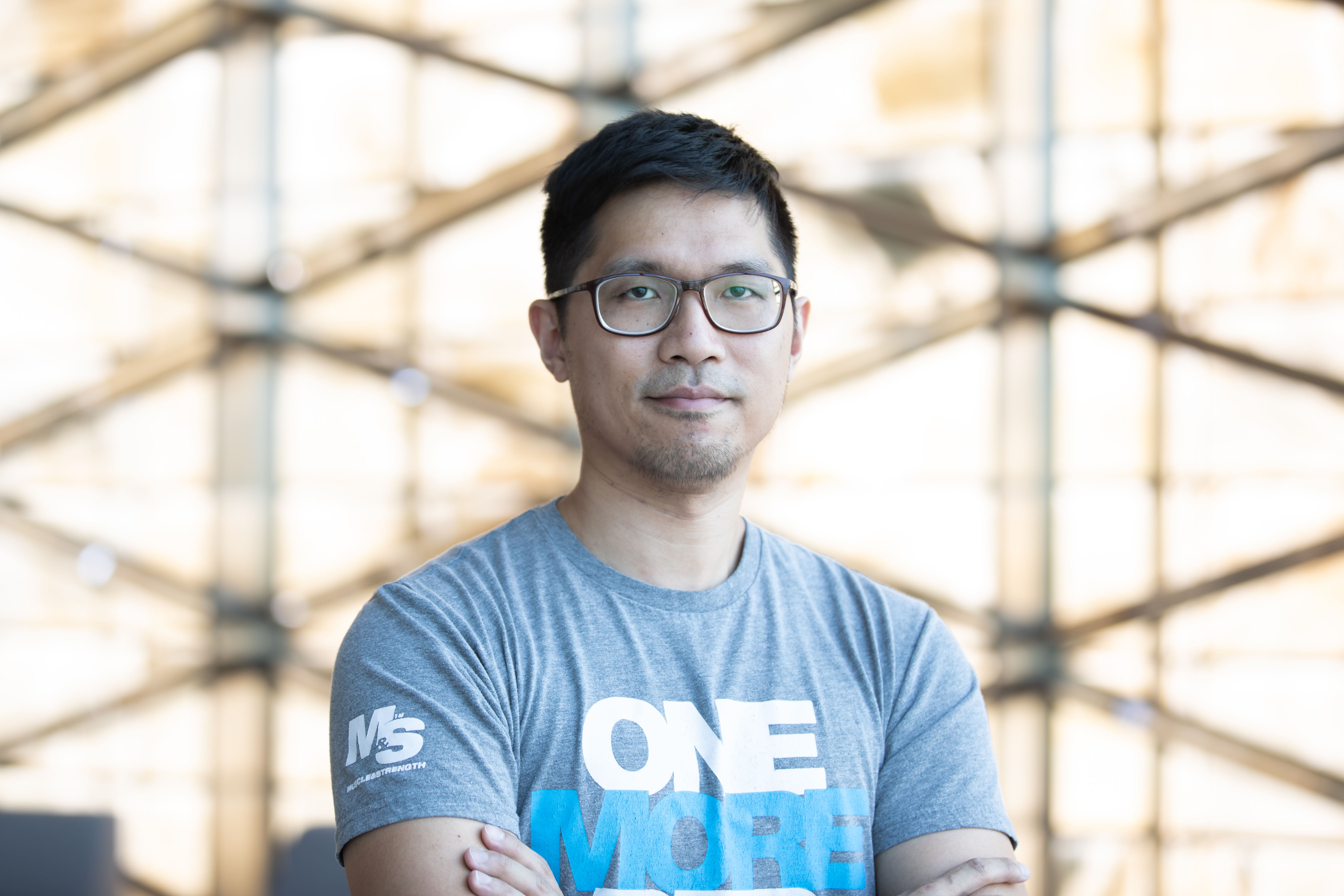Student Focus: Ming-Hui Chiu

KAUST postdoctoral fellow Ming-Hui Chiu joined the University in the fall of 2014 and is currently a member of the 2D Materials Research Lab. Photo by Sarah Munshi.
-By David Murphy, KAUST News
KAUST postdoctoral fellow Ming-Hui Chiu describes himself as a passionate and self-motivated researcher who is devoted to scientific innovation. Chiu is based in the University's Physical Science and Engineering (PSE) division. He joined KAUST in the fall of 2014 and is currently a member of the 2D Materials Research Lab.
Before joining KAUST, Chiu obtained his master's degree in electrical engineering from Nation Hsing Hua University (NTHU) in Taiwan. After graduating from NTHU, he worked as a senior research and development engineer at the electronics manufacturer Au Optronics Corporation before joining the research institute Academia Sinica.
Addressing global device challenges
"My background comprises both electrical engineering and material science. This comprehensive background knowledge allows me to address current electronic device challenges from different perspectives," Chiu noted.
At KAUST, his research focuses on two-dimensional (2D) material heterostructure synthesis and characterization utilizing chemical vapor deposition (CVD) technology. The overarching goal of Chiu's research is the development and optimization of the CVD technique for transition metal dichalcogenides (TMDs) growth.
"2D materials have potential to replace silicon when device shrinking to sub-nm scale. The IEEE International Roadmap for Devices and Systems (IRDS) also considers 2D materials as one of the possible solutions for next-generation electronic devices. I believe I [can] contribute my knowledge in this field," Chiu emphasized.
"My research work enables scientists to quickly find the best material combination and shorten future development periods. It will benefit future low dimensional and flexible electronic device development," he added.
Life by the Red Sea
Chiu noted there were several reasons he decided to continue his studies at KAUST: the chance to make use of the University's cutting-edge technology and resources; his daily interactions with some of the world's prominent researchers; and the enviable work-life balance found at KAUST.
"At KAUST, I have the chance to open up my research horizons by discussing with professors and intellectual peers from over 100 nationalities. With the support of KAUST, I have been able to conduct interesting experiments and get published in some high-impact publications," he said. "My time here has been full of knowledge sharing and collaboration with intellectual people and world-leading groups."
"KAUST [also] provides many recreation facilities inside the community. I can exercise after my daily work to help ease any stresses or tension in my body. Sometimes I take a cruise in the Red Sea to pull myself away from work. I find these opportunities really helpful to refresh my mind," he concluded.
Related stories:
- Isotope science and culture: highlights of the 2018 IsoEcol conference
- KAUST Ph.D. students win best paper awards at mean-field games conferences
- Nada Aljassim becomes first KGSP student to earn Ph.D. at KAUST

